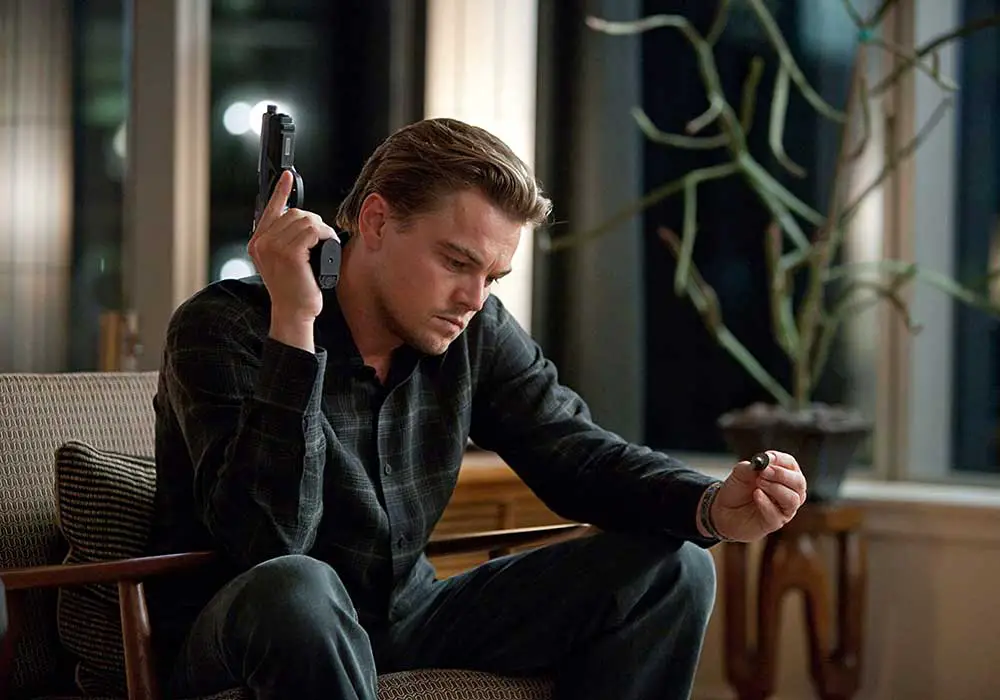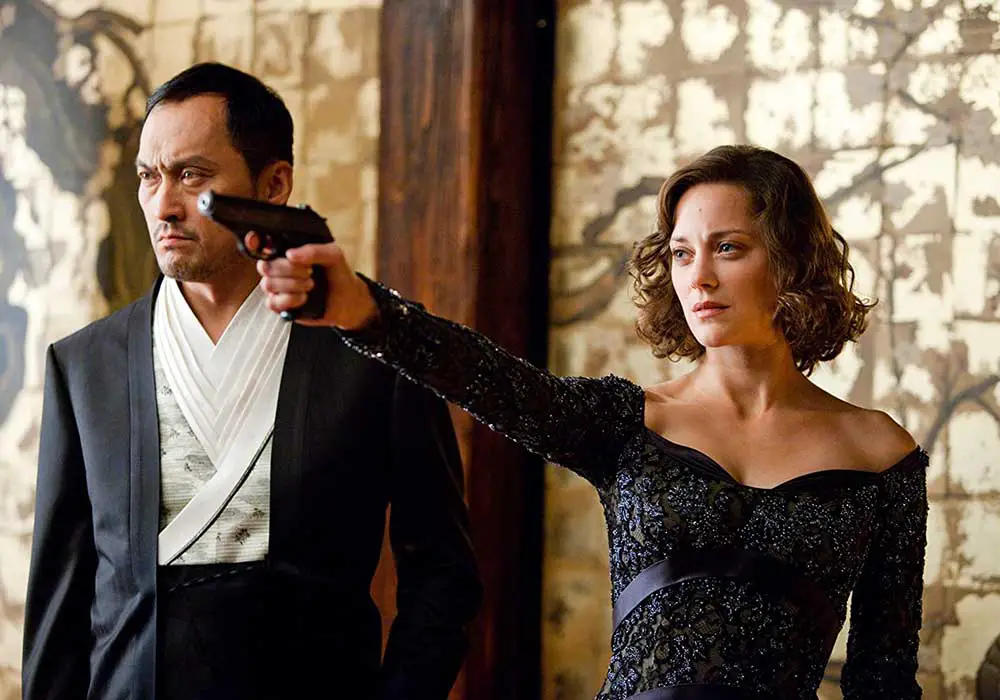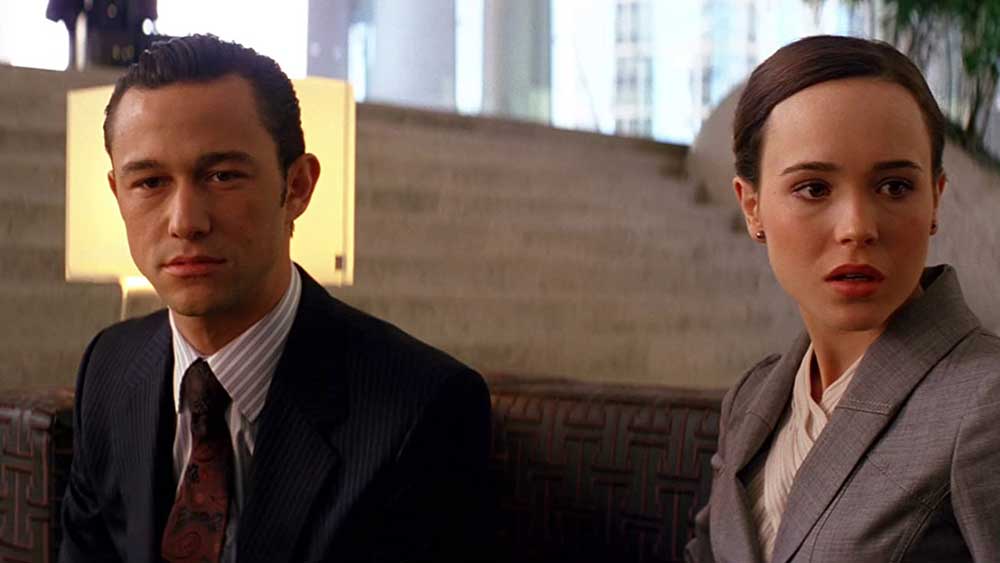Inception director Christopher Nolan: It doesn’t matter if the top falls. The film Inception: the explanation and meaning of the ending, the decoding of the ending – Is it a reality or a dream (director’s opinion)
Genre: Fantasy, Action, Drama, Thriller
Year of production: 2010
Director: Christopher Nolan
Actors: Leonardo DiCaprio, Joseph Gordon-Levitt, Tom Hardy, Marion Cotillard, Kan Watanbe and others
Christopher Nolan has long been reputed to be almost a genius in directing and screenwriting. “Inception” (translated as “Introduction” – Russian localizers changed the name to “Beginning”) is one of his most successful creations. Until now, the meaning of the film “Inception” is the subject of heated discussions on the network, with viewers most interested in the ending.
What is the movie about: plot decoding
The protagonist of the film Dominic Cobb and his assistant Arthur are engaged in corporate espionage, using fantastic technology: they penetrate the world of dreams and steal information from the subconscious of people who own it. This can be quite dangerous. For example, as the film progresses, we learn that Cobb’s wife Mal committed suicide, thinking she was in a dream.
Experimenting with lucid dreams, the couple spent about fifty years in the so-called limbo – the world of pure subconsciousness (in reality, only five hours had passed). After that, Mel could no longer distinguish a dream from reality – jumping from the ledge, she was sure that she was in a dream.
 Leonardo DiCaprio starring Dominic Cobb. Frame from the film.
Leonardo DiCaprio starring Dominic Cobb. Frame from the film.
Cobb was blamed for the death of his wife, and he could not return home to the children. A new customer, businessman Saito, offers to solve this problem – he gives Dominic a task: he must infiltrate through a dream into the subconscious mind of the son of Saito’s competitor Robert. It is necessary to inspire Robert with an idea that implies the collapse of his father’s corporation.
The hero succeeds, but with great adventures that his team faces, falling into different levels of sleep, as well as into the ill-fated limbo. In addition to Arthur, Cobb’s team includes the dream architect Ariadne, the imitator Eames, the technician Yusuf and, in fact, the customer Saito. In dreams, they encounter aggressive projections (images of people) trying to kill them, including the projection of Maul, as well as the tricks of the world itself, playing against a team of spies.
The meaning of the ending
The ending of the film, when Cobb, who has returned to the children, spins the top, raises the most questions. First of all, is the hero really in reality? Maybe Maul was right and all we were shown was a dream? On the Internet you can find many reviews that both confirm this and refute it.
Nolan himself claims that the answer to the question about the reality of events at the end is not important: the main thing is that in the final Cobb got what he wanted – he was reunited with his family. And in principle, for a fantastic spy thriller, which is the “Inception”, this is enough. The presence of a hidden meaning is not at all necessary: the hero went to the goal – the hero achieved it.
 The businessman Saito was played by Ken Watanabe. Frame from the film.
The businessman Saito was played by Ken Watanabe. Frame from the film.
One could say that the meaning of the ending of the movie Inception is that when we are happy and achieve what we want, we relax and prefer not to delve into the details. After all, whether what is happening is a dream or reality, in the end it does not matter even for Cobb. He leaves without waiting for the result of his mini spinning top experiment. This is a valuable thought – it is worth remembering and returning to it when thinking about the idea of the film.
It must be borne in mind that the director did not at all seek to make the logic of the film linear and predictable. He not only left the ending open, he scattered a lot of clues throughout the film that can either confirm one of the versions or completely confuse those who want to get to the bottom of the truth.
In the film, we are given an explanation of how totems work, one of which is Cobb’s spinning top. Their meaning is that people can use them to distinguish a dream from reality. Such items have features that are unique in the real world. In a dream, they do not manifest themselves. So, Arthur’s die falls in reality in a certain way, in a dream – randomly. The chess piece of Ariadne in the ordinary world falls in a certain direction, in a dream – in a random direction. Eames chip with a grammatical error, but only in reality.
For Cobb, for some reason, the spinning top works the other way around: in a dream it behaves uniquely (it rotates endlessly), in the real world it must fall. But is it his totem? It belonged to Mel. Why does Cobb use it? Why did Cobb tell Ariadne how the totem works? After all, no one, except the owner of the totem, should know the details of his work and touch him – this is the director of “The Beginning” made it clear through the interaction of the characters. And the totem works precisely in other people’s dreams.
There is a theory that Cobb’s real totem is a wedding ring. A frame-by-frame analysis shows that in those scenes that are presented to us as events in reality, the hero does not have a ring on his finger, but in scenes in the world of dreams he does. However, this fact by itself does not prove anything. Knowing the aggressive behavior of the projection of his dead wife, Cobb could defiantly wear the ring while being rooted in dreams. The absence of the ring could have angered Mel.
 Marion Cotillard starred as Lisa. Frame from the film.
Marion Cotillard starred as Lisa. Frame from the film.
Or the explanation is even simpler: in a dream, the influence of the subconscious is more distinct. There, Cobb is still married – he can’t get rid of thoughts of Mel. Therefore, she accompanies him as a projection. The subconscious there itself creates this element. In reality, Cobb, on the contrary, tries to live in the present and does not wear a ring.
The Cobb kids end up saying, “We’re building a house on the cliff.” And at the very beginning of the film, we are just shown the main character on the shore near this place. It was in the house on the cliff in Limbo that Saito spent forty years. The elements of the subconscious of the person in whose dream the characters are are constantly working. So maybe Cobb is still in Saito’s dream?
You can still cling to some elements of the world, which is presented as real, at the beginning of the film: a sudden (as if out of nowhere) attack by agents, the chase itself in a city that looks like a labyrinth in the spirit of Ariadne’s creations. But here a lot can be justified by the concept of the operator’s work (regardless of the world that the characters are in), and sometimes just blunders. The latter, despite the proclaimed genius of the director, are also possible here.
To answer this riddle, it is worth digressing from the movie Inception itself and paying attention to what the actors know about the reality of the ending. You can find an interview with Michael Caine in which he gives a fragment of his conversation with Christopher Nolan. To the question “Where is the dream and where is the reality?” the director replied: “If you are in the frame, this is reality.” And in the final scene, the hero of Kane is just present.
Movie idea
Now let’s pay attention to what many fans of Inception suspect and what the filmmakers clearly hinted at: everything that happens is an allusion to the cinema.
How does a good movie work? The viewer is given an exciting, fascinating spectacle with thoughtful dramaturgy, so that he is completely absorbed by it. Meanwhile, at the heart of almost every film is some idea, which, under the sauce of the plot, acting, special effects, is introduced into the consciousness or subconscious of the viewer. That’s what Cobb and company are doing.
Who is the main character? Organizer, director – in fact, the director. Who are the rest of his team? Aridna is engaged in the architecture of sleep (we read: the architecture of the film). She paves the way for the plot to develop. She is a screenwriter. Impersonator Eames is an actor. Yusuf does special effects. Arthur’s work is similar to that of an executive producer.
Mol is not a member of the team, but calls everything into question. She is a critic. Saito is apparently a sponsor who decided to see firsthand what exactly the money allocated to him for the “movie” went to. Robert, on the other hand, is the one who is absorbed in events and “is glad to be deceived”, the one who is introduced to the idea. He is a spectator.
 Joseph Gordon-Levitt as Arthur. Frame from the film.
Joseph Gordon-Levitt as Arthur. Frame from the film.
Let’s return to the found possible meaning of the final scene: Cobb, like Robert, was absorbed in events. And just like Robert, he received his catharsis – the successful completion of the task and the meeting with the children. He is satisfied with the denouement, the details are not important to him.
But the idea of the collapse of the company, introduced into Robert’s head, will germinate and bear fruit, which, perhaps, will destroy his life and the lives of those who value what his father created. Robert does not think about it: he feels satisfaction, an imaginary insight. Maybe the same thing happens to Cobb? Or everything ends well. This is unknown. The main thing is that the work of the “filmmakers” (the people who were shown to us, the secret manipulators or the filmmakers themselves) has been done: the idea has been implemented.







